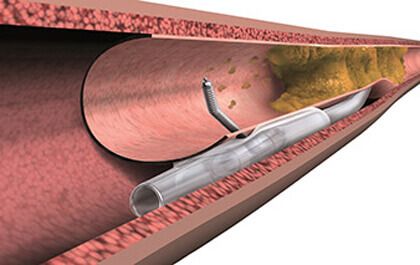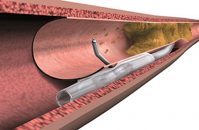In recent years, there has been an increase in the number of percutaneous coronary interventions (PCI) performed to treat chronic total occlusion (CTO). This increase is due to the availability of more advanced technology and greater experience of both operators and specialized centers. However, it is important to note that this technique is not free…
Coronary Angioplasty in Chronic Total Occlusions (CTO): Are There Sex Differences?
Studies and registries assessing sex differences in chronic total occlusions (CTO) are limited and women are under-represented, accounting for only 14%-21% of included patients. Even though success rate is comparable between sexes, several studies have shown higher complications rate among women. The aim of this study was to identify sex related baseline and procedural differences,…
Comparative Study of Two Drug Coated Balloons: Angiographic and Clinical Outcomes
The incidence of in-stent restenosis (ISR) requiring repeat revascularization ranges between 5% and 10% of PCI patients receiving new generation drug eluting stents (DES). This is why the current European guidelines on myocardial revascularization recommend treating ISR with drug coated balloons (DCB) with class I recommendation, level of evidence A. DCB are mostly coated with…
AQCA Study: Pre-PCI Virtual QFR for Planning PCI vs. Conventional Angiography
Several studies have used physiological assessment after a percutaneous coronary intervention (PCI) to improve clinical outcomes. However, results are not entirely conclusive. The limitations of using these physiological assessment methods are the need for extra measurements with increased procedure time, more radiation, and more contrast, which in turn leads to higher costs. To counteract these…
Left Main Coronary Artery Revascularization: Are Periprocedural Complications Significant?
In the field of percutaneous coronary intervention (PCI) and myocardial revascularization surgery (MRS), previous analyses have shown a link between in-hospital and 30-day complications, in terms of complicated progress and/or mortality. Most of this information comes from non-randomized or old studies, which translates into contradictory data. Researchers analyzed the EXCEL study, which included patients with…
ACC 2023 | Subanalysis of the REVIVED-BICS Study2
This study demonstrated that coronary angioplasty does not entail any benefit in chronic stable angina over optimal medical therapy in those with impaired ventricular function (EF >35%) with extensive coronary artery disease and viable myocardium. Dr. Divaka Perera performed a subanalysis of said study. At the time of the study, the amount of viability and…
Combined Calcified Lesion Preparation Strategy
Stent sub-expansion in coronary territory has been identified as one of the major predictors of stent failure at followup, which is why improving stent expansion will improve clinical and imaging outcomes. In percutaneous coronary interventions (PCI) of severely calcified lesions, calcified lesions present a major challenge since they impede stent delivery, causing stent under-expansion or…
Is Clopidogrel Monotherapy Safe After a Month of Dual Antiplatelet Therapy in Diabetic Patients?
Currently, many randomized studies have suggested that short-term dual antiplatelet therapy (DAPT) followed by monotherapy reduces bleeding without increasing major cardiovascular events after percutaneous coronary intervention (PCI). A meta-analysis of six randomized studies has shown this benefit using ticagrelor monotherapy after short DAPT. However, there is no data on the results of clopidogrel monotherapy. Researchers…
Ticagrelor or Prasugrel Post-PCI in Daily Practice Patients
The ISAR-REACT 5 showed a significant reduction in the composite outcome of death, acute myocardial infarction (AMI), or stroke when using prasugrel vs. ticagrelor in patients with acute coronary syndrome (ACS), mainly at the expense of an AMI reduction. While this study changed clinical practice, it has stirred some criticism regarding certain methodological aspects, such…
Post PCI FFR
Much research has been done on the usefulness of functional testing such as fractional Flow reserve (FFR) after percutaneous coronary intervention (PCI), resulting in the correlation of pathological FFR values with major adverse events at 6 months, as shown by Pijls, et al. The impact of post PCI FFR on prognosis has not been studied…









